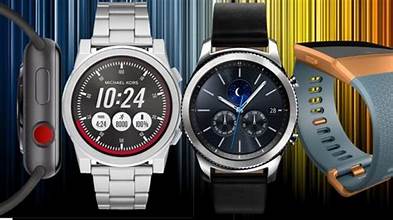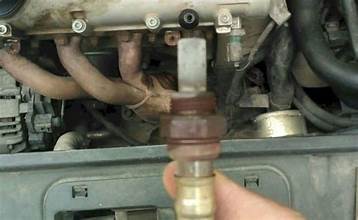Can Powerful A Bad Battery Cause Limp Mode
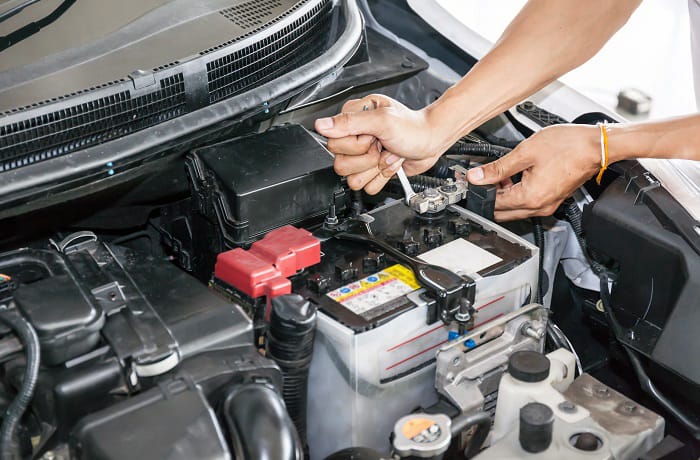
Envision cruising down the roadway, your vehicle murmuring like a satisfied feline, when out of nowhere, it seems like it’s lost its thunder. Your vehicle enters Battery Cause Limp Mode, and you’re left slithering along, thinking about what turned out badly. While different issues can set off this disappointing peculiarity, one astounding guilty party may be concealing directly in front of you – or rather, under your hood.
Might a terrible battery at some point be the subtle saboteur behind your vehicle’s limp mode misfortunes? We should dig into the energizing truth behind this unforeseen association and uncover how something as straightforward as a faltering battery could carry your excursion to a languid end.
1.What Is Limp Mode?
Limp mode, otherwise called “safeguard mode,” is a self-security highlight in present day vehicles intended to limit harm when the vehicle’s PC distinguishes a difficult issue. At the point when the vehicle enters limp mode, the motor power is decreased, restricting pace and forestalling further harm. Drivers frequently experience an unexpected loss of speed increase, decreased motor execution, and the enactment of caution lights on the dashboard.
Familiar expressions related with limp mode incorporate “decreased power mode,” “crisis mode,” and “motor security mode.” This state is commonly set off by issues like transmission issues, sensor disappointments, or basic motor shortcomings. By confining the vehicle’s capacities,Battery Cause Limp Mode guarantees that you can securely arrive at a technician for important fixes.
2.How Can A Bad Battery Trigger Limp Mode?
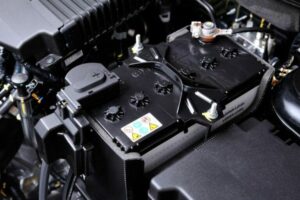
A terrible battery can set off limp mode by causing electrical disturbances that influence the vehicle’s basic frameworks. At the point when a battery fizzles, it can prompt voltage drops and flighty power supply, befuddling the vehicle’s PC. Normal side effects of a terrible battery incorporate trouble turning over the motor, darkening headlights, and electrical errors.
These issues can fool the vehicle’s control modules into recognizing an issue, inciting limp mode to safeguard the motor and transmission. States frequently used to depict this situation incorporate “battery disappointment,” “electrical issues,” and “power supply issues.” Guaranteeing your battery is looking great is fundamental to forestall startling limp mode enactment and keep up with vehicle execution.
3.Signs Your Battery Is Bad
Signs your battery is terrible incorporate sluggish motor wrench, faint headlights, and continuous requirement for kicks off. In the event that your vehicle battles to turn over or the motor starts gradually, it demonstrates a feeble battery. Normal side effects likewise include gleaming inside lights and failing gadgets. Phrases like “battery disappointment,” “drained battery,” and “battery substitution” are frequently used to portray these issues.
Erosion on battery terminals and an enlarged battery case are visual marks of a weak battery. Ordinary battery checks and upkeep can assist with keeping away from these issues, guaranteeing dependable vehicle execution.
1.Hard Starting
Hard beginning alludes to the trouble in getting your motor to start and start running. Normal signs incorporate expanded turning time, rehashed endeavors to begin, and the motor faltering before it at long last beginnings. Phrases like “motor won’t turn over,” “inconvenience beginning,” and “beginning issues” are frequently used to depict this issue.
Reasons for hard beginning can go from a frail battery and broken starter engine to fuel framework issues and start issues. Standard upkeep and opportune fixes can forestall hard beginning, guaranteeing your vehicle begins flawlessly without fail.
2.Engine Noises
Motor commotions can show different basic issues inside your vehicle. Normal sounds incorporate thumping, ticking, and shaking. Thumping commotions frequently highlight issues with the motor heading or cylinders, while ticking sounds can be connected with low oil levels or valve issues. Shaking could recommend a free part or exhaust framework issue. Phrases like “motor thump,” “ticking sound,” and “shaking commotion” are much of the time used to depict these side effects.
Recognizing and addressing motor commotions immediately is urgent to forestall further harm and guarantee the life span of your motor. Customary support and opportune diagnostics can assist with keeping your motor chugging along as expected and discreetly.
3.Slow Electrical Response
Slow electrical reaction in your vehicle frequently focuses to issues with the battery, alternator, or wiring. Normal side effects incorporate deferred power window activity, slow dashboard light brightening, and slacking infotainment framework execution. Phrases like “electrical slack,” “deferred reaction,” and “slow power windows” are frequently used to portray these issues.
Causes can go from a frail or bombing battery to poor electrical associations or a breaking down alternator. Consistently checking your vehicle’s electrical framework and guaranteeing all parts are looking great can forestall slow electrical reaction and keep up with ideal execution.
4.Excessive Cranking
Inordinate wrenching happens when your motor takes too lengthy to even consider beginning, requiring delayed turning over of the start. Normal signs incorporate broadened times of turning before the motor turns over or continuous endeavors to begin with no quick achievement. Phrases like “long wrenching time,” “continued turning,” and “beginning issues” are utilized to portray this issue.
Causes can go from a frail battery and flawed starter engine to fuel framework or start issues. Addressing unnecessary turning quickly is pivotal to stay away from expected harm and guarantee solid vehicle begins. Customary support and convenient diagnostics can assist with settling inordinate turning and further develop motor execution.
4.Can A Leaking Battery Acid Trigger Limp Mode?
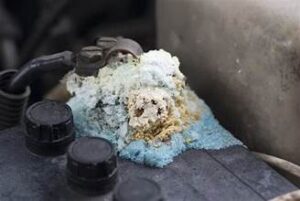
Indeed, spilling sulfuric acid can set off limp mode in your vehicle. Sulfuric acid breaks can cause erosion on terminals and wiring, prompting electrical breakdowns. This can confound the vehicle’s PC, enacting limp mode to safeguard the motor and transmission. Familiar expressions incorporate “sulfuric acid break,” “erosion issues,” and “electrical flaws.” Side effects could include unfortunate motor execution, cautioning lights, and decreased power.
Tending to battery spills immediately and cleaning impacted regions can forestall limp mode initiation and guarantee your vehicle’s electrical framework works appropriately. Normal battery upkeep is vital to keep away from these issues.
5.Can I Disconnect The Battery To Reset Limp Mode?
Detaching the battery can some of the time reset limp mode, yet it’s anything but a reliable fix. This technique clears the vehicle’s PC memory, possibly eliminating brief blames that set off limp mode. Phrases like “battery disengage reset,” “clear limp mode,” and “reboot vehicle PC” are frequently used to depict this cycle.
Nonetheless, this approach may possibly offer an impermanent arrangement in the event that the basic issue stays irritating. For a long-lasting fix, it’s pivotal to analyze and fix the main driver of limp mode. Standard support and brief thoughtfulness regarding vehicle issues can forestall the requirement for such resets.
6.How To Get Out Of Limp Mode

To escape limp mode, first recognize and address the underlying driver of the issue. Normal advances incorporate checking for and fixing any motor or transmission issues, examining sensors, and guaranteeing there are no free associations. Phrases like “analyze limp mode,” “reset limp mode,” and “fix motor issues” are oftentimes utilized.
At times, separating the battery can reset the framework briefly, however an intensive fix is required for an extremely durable arrangement. Standard upkeep and convenient diagnostics can assist with forestalling limp mode and keep your vehicle moving along as planned. If all else fails, counsel an expert technician for precise investigating and fix.
1.Switch Off Your Car And Restart
Turning off your vehicle and restarting it can at times determine minor issues setting off limp mode. This straightforward activity can reset the vehicle’s PC framework, clearing impermanent blames and reestablishing ordinary capability. Familiar expressions incorporate “restart motor,” “reset vehicle PC,” and “power cycle.”
While this strategy may briefly lighten limp mode, it’s fundamental to analyze and fix the basic issue for a super durable arrangement. Consistently switching off and restarting your vehicle can assist with clearing minor errors, however in the event that limp mode endures, look for proficient fix to address the underlying driver.
2.Inspect All Fluids
Reviewing all liquids is vital for settling limp mode issues. Check motor oil, transmission liquid, and coolant levels to guarantee they are inside suggested ranges. Phrases like “liquid levels check,” “motor oil assessment,” and “transmission liquid survey” are frequently utilized. Low or debased liquids can cause execution issues, setting off limp mode as a defensive measure.
Routinely examining and finishing off liquids keeps up with vehicle wellbeing and forestalls issues that could prompt limp mode. In the event that liquid levels are typical yet limp mode continues, further diagnostics might be expected to distinguish and fix basic issues.
3,Examine The Wires Going To Your Transmission
Looking at the wires going to your transmission is fundamental for investigating limp mode. Assess these wires for harm, free associations, or consumption, which can disturb transmission transmissions and trigger limp mode. Phrases like “transmission wiring check,” “examine transmission connectors,” and “wiring issues” are generally utilized.
Harmed or detached wires can cause transmission glitches, prompting diminished execution and limp mode enactment. Guaranteeing all wiring is secure and in great shape can forestall limp mode and keep up with smooth transmission activity. Assuming that issues are found, fixing or supplanting flawed wires might determine the issue and reestablish typical capability.
7.The Difference Between Limp Mode And A Bad Battery
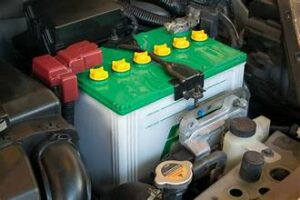
Limp mode and a terrible battery are particular issues, however the two of them can influence vehicle execution. Limp mode is a wellbeing highlight that decreases motor ability to forestall harm when the vehicle’s PC identifies a difficult issue, frequently connected with the motor or transmission.
Well known phrases incorporate “motor insurance mode” and “safeguard mode.” A terrible battery, then again, commonly creates beginning issues, faint lights, and electrical errors. Phrases like “battery disappointment” and “frail battery side effects” depict these issues. While limp mode limits ability to safeguard the motor, a terrible battery influences electrical framework unwavering quality. Exact conclusion is fundamental for resolving the particular issue and reestablishing ideal vehicle capability.
8.Conclusion
All in all, a terrible battery can to be sure reason a vehicle to enter limp mode. The battery is vital to the vehicle’s electrical framework, and a weak battery can bring about deficient voltage being conveyed to basic parts, including the motor control unit (ECU).
At the point when the ECU identifies strange voltage levels or gets whimsical signs because of the unfortunate battery execution, it might set off limp mode as a defensive measure to forestall further harm to the motor and transmission. Subsequently, addressing battery issues speedily is urgent to keeping up with vehicle execution and staying away from the awkward and possibly dangerous circumstance of limp mode.
FAQs
1. What is limp mode in a vehicle?
Limp mode, otherwise called limp home mode, is a wellbeing highlight in current vehicles. At the point when the vehicle’s PC distinguishes a huge issue, it limits the motor’s ability to forestall further harm, permitting the driver to “limp” home or to a mechanics shop.
2. Could a terrible battery at any point truly cause limp mode?
Indeed, a terrible battery can cause limp mode. A defective battery may not supply satisfactory voltage to the vehicle’s electronic control unit (ECU) and other critical frameworks, driving the ECU to set off limp mode to safeguard the motor and transmission.
3. How does a terrible battery influence the vehicle’s presentation?
A terrible battery can prompt a few execution issues, including:
- Trouble turning over the motor
- Unfortunate motor execution
- Glimmering dashboard lights
- Inconsistent way of behaving of electronic frameworks
- Initiation of limp mode
4. What are the indications of a terrible battery?
Normal indications of a terrible battery include:
- Slow motor wrench or trouble beginning the vehicle
- Darkening headlights and inside lights
- Electrical issues like breaking down power windows or locks
- A battery cautioning light on the dashboard
- Consumption on the battery terminals
5. How might I decide whether the battery is causing limp mode?
To decide whether the battery is the reason for limp mode, you can:
- Check the battery voltage utilizing a multimeter; a completely energized battery ought to peruse around 12.6 volts or more.
- Examine the battery terminals for consumption and clean them if fundamental.
- Test the battery’s heap limit at a car parts store or with an expert technician.
- Check for any put away mistake codes in the vehicle’s ECU that could show a battery-related issue.



